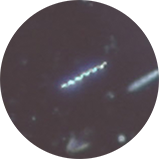Hard Tick Relapsing Fever
- Home
- Tick ID
- Overview of Tickborne Diseases
- Lyme Disease
- Tickborne Relapsing Fever (TBRF)
- Hard Tick Relapsing Fever
- Anaplasmosis
- Ehrlichiosis
- Rocky Mountain Spotted Fever
- Rickettsia parkeri Rickettsiosis
- Tularemia
- Babesiosis
- Heartland and Bourbon Virus Diseases
- Colorado Tick Fever
- Powassan Virus Disease
- Tickborne Diseases Abroad
- Tick Bites/Prevention
- Lyme Disease Prophylaxis After Tick Bite
Agent
Borrelia miyamotoi
Where Found
Occurs in the upper midwestern, northeastern, and mid-Atlantic states, where it is transmitted by Ixodes scapularis ticks, and in Pacific coastal states, where it is transmitted by I. pacificus ticks. Unlike Lyme disease, which most commonly occurs in June and July, hard tick relapsing fever occurs most commonly in July and August.

Incubation Period
3 days to 6 weeks, exact range unknown
Signs And Symptoms
Infection with B. miyamotoi most frequently presents as a self-resolving acute febrile illness, but the spectrum of illness varies from subclinical to severe. Severe manifestations (e.g., meningoencephalitis) appear to be more common in people with immunocompromising conditions. Symptoms may include:
- Fever
- Chills
- Relapsing fever (10-40% of cases)
- Fatigue
- Arthralgia/myalgia
General Laboratory Findings
- Leukopenia
- Thrombocytopenia
- Elevated hepatic transaminases
- Proteinuria
Laboratory Diagnosis
Diagnosis relies on signs and symptoms coupled with:
- Polymerase chain reaction (PCR) assays that detect B. miyamotoi DNA in blood or cerebrospinal fluid; or
- Serologic assays
Notably, serologic tests are most often negative during the acute presentation and are therefore of limited utility in diagnosis, though paired acute and convalescent tests can confirm a recent infection. Some serologic and PCR tests can cross-react with other Borrelia species, making travel and tick exposure history important to distinguish between these entities.
Treatment
There are no randomized controlled trials that evaluate treatment regimens, but in published case series, patients were successfully treated with antimicrobial regimens effective for Lyme disease. A 2-week course of doxycycline or amoxicillin is appropriate for outpatient treatment of most patients, including young children. For persons with severe illness requiring hospitalization (e.g., meningoencephalitis), IV antibiotics such as ceftriaxone are appropriate initial therapy. When treating patients with immunocompromising conditions for suspected B. miyamotoi infection, consultation with an infectious disease specialist is advised.
B. miyamotoi symptoms typically improve within 24-72 hours following administration of appropriate antibiotics. The Jarisch-Herxheimer reaction has been described in a minority of treated patients.
References
Boden K, Lobenstein S, Hermann B, Margos G, Fingerle V. Borrelia miyamotoi–Associated Neuroborreliosis in Immunocompromised Person. Emerg Infect Dis. 2016;22(9):1617-1620.
Chowdri HR, Gugliotta JL, Berardi VP, et al. Borrelia miyamotoi infection presenting as human granulocytic anaplasmosis: a case report. Ann Intern Med. 2013;159(1):21-7.
Gugliotta JL, Goethert HK, Berardi VP, Telford SR 3rd. Meningoencephalitis from Borrelia miyamotoi in an immunocompromised patient. N Engl J Med. 2013 Jan 17;368(3):240-5.
Jiang B, Jia N, Jiang J, Zheng Y, Chu Y, Jiang R, et al. Borrelia miyamotoi Infections in Humans and Ticks, Northeastern China. Emerg Infect Dis. 2018;24(2):236-241.
Jobe DA, Lovrich SD, Oldenburg DG, et al. Borrelia miyamotoi infection in patients from Upper Midwestern United States, 2014-2015. Emerg Infect Dis. 2016;22(8):1471-3.
Krause PJ, Schwab J, Narasimhan S, et al. Hard tick relapsing fever caused by Borrelia miyamotoi in a child. Pediatr Infect Dis J. 2016;35(12):1352-1354.
Krause PJ, Carroll M, Fedorova N, Brancato J, Dumouchel C, Akosa F, Narasimhan S, Fikrig E, Lane RS. Human Borrelia miyamotoi infection in California: Serodiagnosis is complicated by multiple endemic Borrelia species. PLoS One. 2018;13(2):e0191725.
Molloy PJ, Telford SR 3rd, Chowdri HR, et al. Borrelia miyamotoi disease in the northeastern United States: a case series. Ann Intern Med. 2015;163(2):91-8.
Wroblewski D, Gebhardt L, Prusinski MA, et al. Detection of Borrelia miyamotoi and other tick-borne pathogens in human clinical specimens and Ixodes scapularis ticks in New York State, 2012-2015. Ticks Tick Borne Dis. 2017;8(3):407-411.